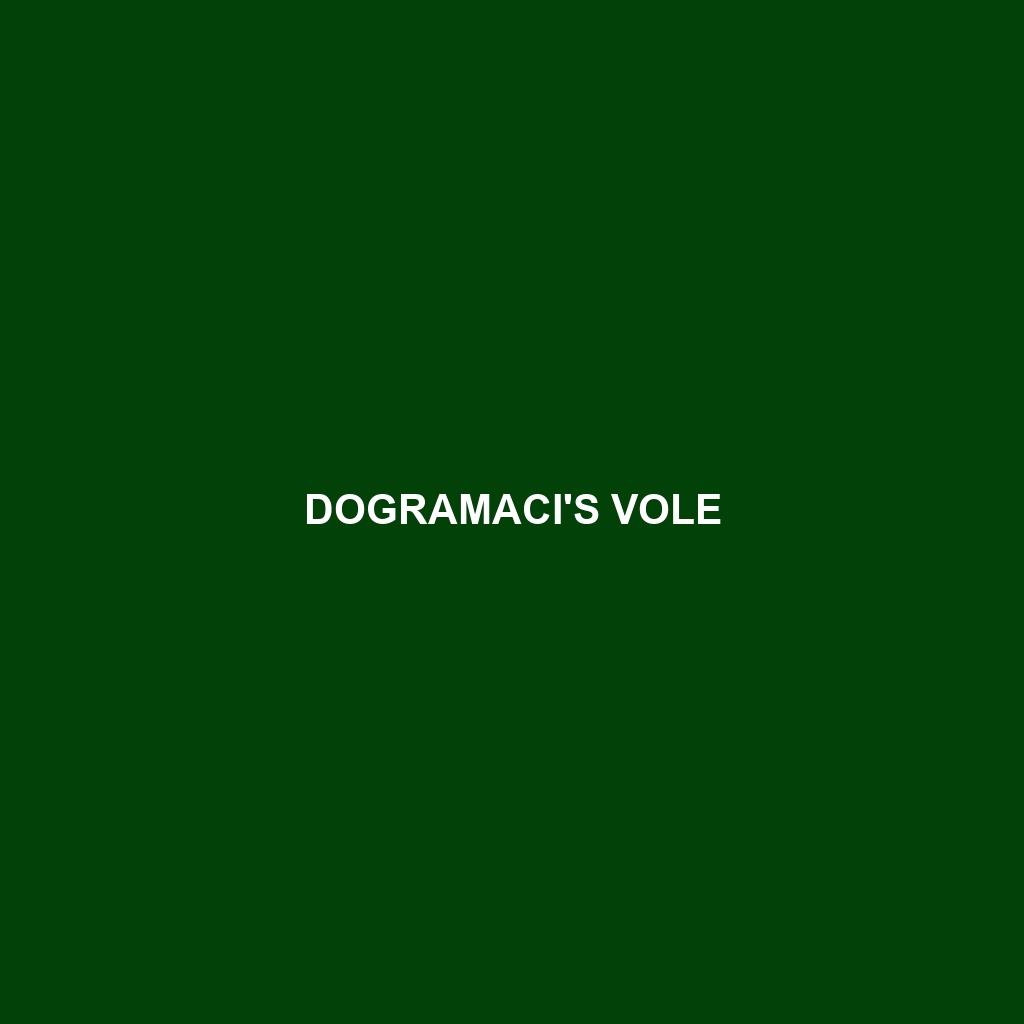Dogramaci’s Vole: A Comprehensive Species Description
Common Name: Dogramaci’s Vole
Scientific Name: Microtus dogramacii
Habitat
Dogramaci’s Vole is primarily found in the mountainous regions of northeastern Turkey. This rodent inhabits grasslands, alpine meadows, and disturbed areas, favoring environments that provide adequate cover from predators and access to vegetation. Their presence is commonly noted at elevations ranging from 1,000 to 2,500 meters, where they thrive in temperate climates characterized by cold winters and moderate summers.
Physical Characteristics
Dogramaci’s Vole is a small rodent, measuring approximately 12 to 15 cm in length, excluding its short tail, which adds another 4 to 6 cm. The fur is soft and dense, predominantly brown to grayish-brown on the dorsal side, with a lighter, cream-colored belly. Distinctive features include small, rounded ears and a robust, stocky body, making it well-adapted for burrowing and navigating through dense vegetation. Their short limbs and sharp claws enable effective movement through their natural habitat.
Behavior
Typically, Dogramaci’s Vole exhibits a diurnal lifestyle, being most active during the day. They are known for their burrowing habits, creating extensive tunnel systems beneath the surface that provide shelter and storage for food. Socially, these voles can be both solitary and communal, often seen in small groups during foraging activities. Their communication includes a range of vocalizations and scent markings to establish territory and warn each other of potential threats.
Diet
The diet of Dogramaci’s Vole consists primarily of herbaceous plants, seeds, and roots. They are particularly fond of grasses, clover, and various forbs, which are all abundant in their alpine habitat. Their feeding habits are crucial for maintaining the vegetation structure in their ecosystem, contributing to soil aeration through their digging behavior. Being herbivores, they play a significant role in the energy transfer within their food web.
Reproduction
Dogramaci’s Vole breeds seasonally, with a peak in reproduction occurring in the spring and summer months. The gestation period lasts approximately 21 days, after which the female gives birth to a litter of 3 to 6 pups. These young are altricial, meaning they are born blind and hairless, relying fully on their mother for nourishment and protection. Maternal care is substantial, as the mother feeds and protects her pups until they are independent at around 3 weeks of age. Mating behaviors are often marked by vocalizations and territorial displays by males.
Conservation Status
Currently, Dogramaci’s Vole is classified as “Vulnerable” on the IUCN Red List. Habitat loss due to agricultural expansion and urban development poses significant threats to their population. Conservation efforts are critical to preserve their natural habitats and ensure the survival of this unique species where future breeding opportunities may arise.
Interesting Facts
One fascinating aspect of Dogramaci’s Vole is its unique adaptation to high altitudes, allowing it to thrive in environments that many other rodents cannot inhabit. Additionally, this species has a specific role in the local folklore of Turkish culture, often symbolizing resilience and adaptability in nature. Their burrowing behavior also contributes to soil health, influencing the overall ecosystem positively.
Role in Ecosystem
Dogramaci’s Vole serves as a vital component of its ecosystem. As a herbivore, it helps manage vegetation through its feeding and burrowing activities, which in turn supports various plant species and provides habitat for other wildlife. Furthermore, they are prey for numerous predators, including birds of prey and small mammals, thus contributing to the food web dynamics within their environment. Their presence indicates a healthy and balanced alpine ecosystem.
